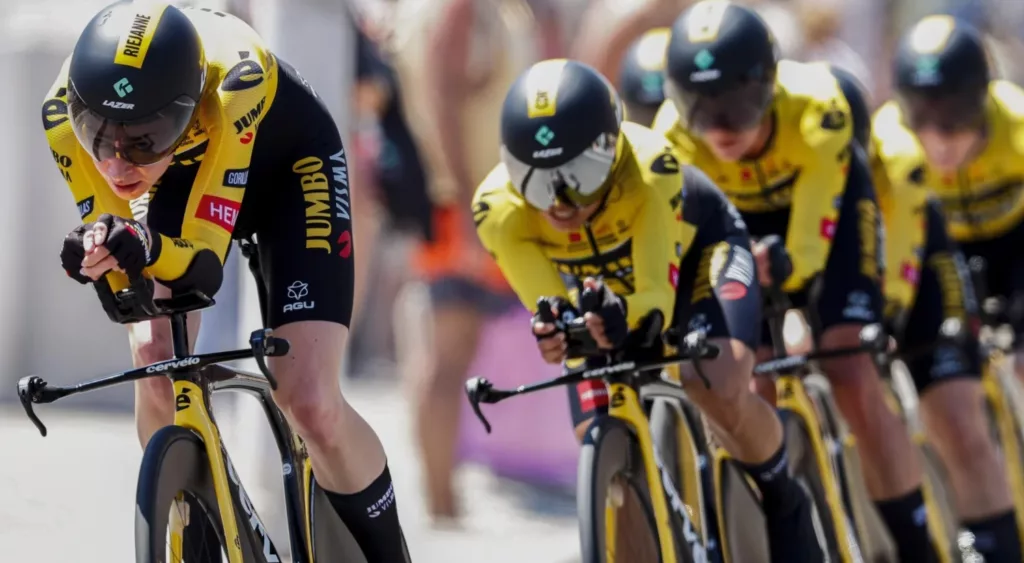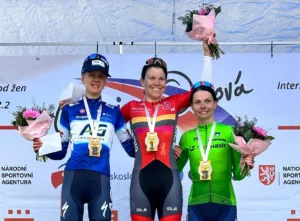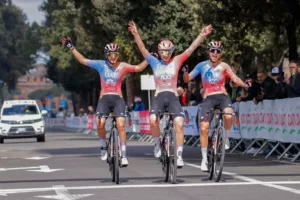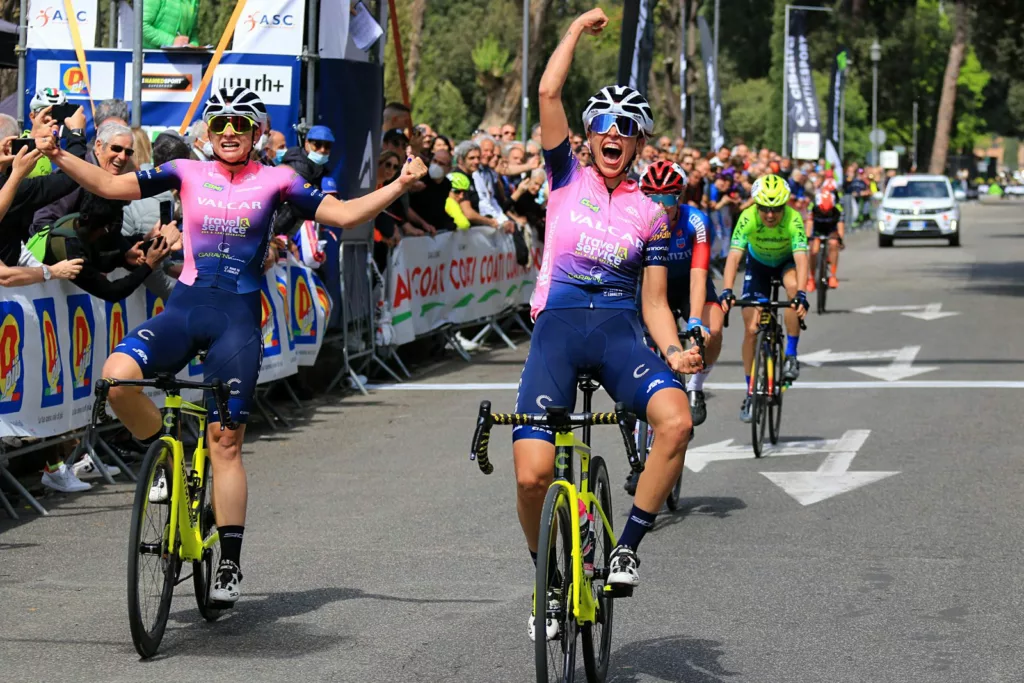Jumbo-Visma delivered their first win of the 2023 season with a storming ride in Torrevieja to kick off the 2023 Vuelta Femenina. On a course lasting 14.5km around the seaside town, the Dutch team were able to finish fastest with Anna Henderson crossing the line first to take a maiden red leader’s jersey. The team ensured that their GC hope Riejanne Markus finished in their front 4 and also put Marianne Vos into a strong position to take over the race lead in the coming days.
Table of Contents
ToggleBehind them, Canyon SRAM was super close at just half a second behind the yellow and black team. Chloe Dygert returning to the team after not racing for over a year powered them almost to a stage victory. Pre-stage favourites SD Worx had to settle for 5th place, 14 seconds behind Jumbo-Visma. Trek-Segafredo and Movistar finished a few seconds ahead and start tomorrow 9 seconds and 12 seconds off the lead respectively.
The only crash of the day came from Georgie Howe, upsetting the chances of Jayco-AlUla, who finished 8th at 31″ as a result. The biggest losers today from a GC perspective were Silvia Persico and Mavi Garcia. Both have been tipped to do well but must start 41 seconds and 42 seconds off the pace already.
“We are really very happy. It’s our first win of 2023 and to win together is really great. We can be proud of this victory. Our reconnaissance was very good and we managed to execute our plan. We believed in each other. It’s so nice to win together. I was really, really nervous in the hot seat! During the time trial itself I had few nerves, because I knew we had done well. It is very cool to do it together like this.”
Anna Henderson

2023 Vuelta Femenina Stage 1 result
Results powered by FirstCycling.com
Photo credits: Cor Vos
Power data
In a time trial, managing effort is particularly important. In a team time trial, being able to create a plan that takes into account the different shapes and power profiles of each rider can be a tough task. We saw plenty of splits in teams during Stage 1, particularly when emptying the tanks for the finish line. On such a flat course, the outright power is the most important factor to some degree as the increased watts help riders push higher top-line speeds. For once, watts per kilo has a limited effect as it only really helps the accelerations out of slow corners and going over the small bump in the parcours.
The ideal team for this stage would have 7 Chloe Dygerts. We can’t see the data for every rider but the American has the highest power showing on this list, by a pretty healthy margin. Obviously, teams must offset winning here with other goals like GC and stage wins, which changes the composition of teams in reality.
What we see from this near 20-minute effort is that Gaia Realini and the dominant force in this year’s spring classics, Demi Vollering, are potentially going to be close to each other when it comes to the major climbs. However, at the same w/kg value, Demi will still be able to potentially ride away from Gaia due to her higher overall watts being ridden. The data from Chloe Dygert is also intriguing but there are questions about whether she would be able to deliver the same numbers at the end of 100+km of racing, particularly after a few days. It’s a great question mark about where she actually is, given all of the surgeries and illnesses since her peak in 2019-2020.
Difference between Normalised Power (NP) and Average Power
Normalised power (NP) and average power (AP) are two metrics used in cycling to quantify the intensity of a ride. AP is simply the average power output over the entire duration of the ride, whereas NP is an estimation of the power that the rider would have been able to sustain if the power output had been constant throughout the ride, accounting for fluctuations in intensity. NP takes into account the fact that the average power does not just determine the physiological stress of a ride, but also by the variability in power output.
In other words, NP gives a better representation of the overall effort put into a ride and can be used to compare the physiological stress of rides with different durations or profiles. The closer that AP and NP are to each other, the likelihood of a constant effort increases. The further apart they are from each other can indicate more time spent at a higher effort than the average power.
Riders
Amber Kraak (2nd)
267 watts @ 4.8w/kg
NP: 279w
Chloe Dygert (5th)
327 watts @ 5/wkg
NP: 343w
Gaia Realini (11th)
200 watts @ 5 w/kg
NP: 206w
Demi Vollering (20th)
281 watts @ 5w/kg
NP: 304w
Loes Adegeest (27th)
262 watts @ 4.6w/kg
NP: 276w
Juliette Labous (29th)
273 watts @ 4.7w/kg
NP: 282w
Catalina Soto Campos (92nd)
275 watts @ 4.8w/kg
NP: 289w
Ilaria Sanguineti (116th)
247 watts @ 4.1w/kg
NP: 264w
First half: 291 watts @ 4.8w/kg, NP: 302w
Second half: 215 watts @ 3.6w/kg, NP:224w
Sanguineti dropped from the group at exactly the intermediate split at 7.1km – so her effort can be looked as as two halves






